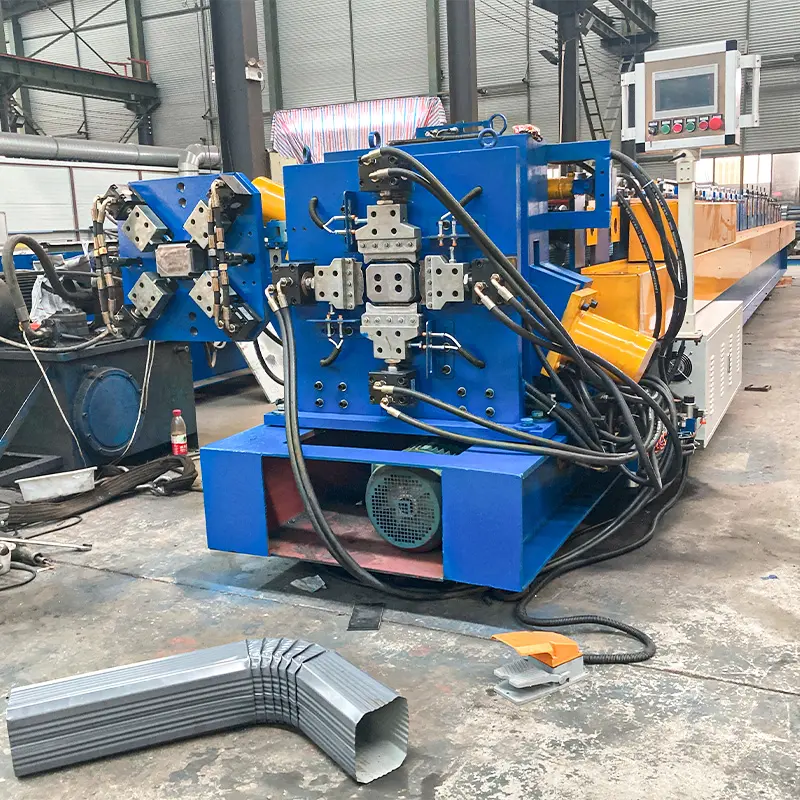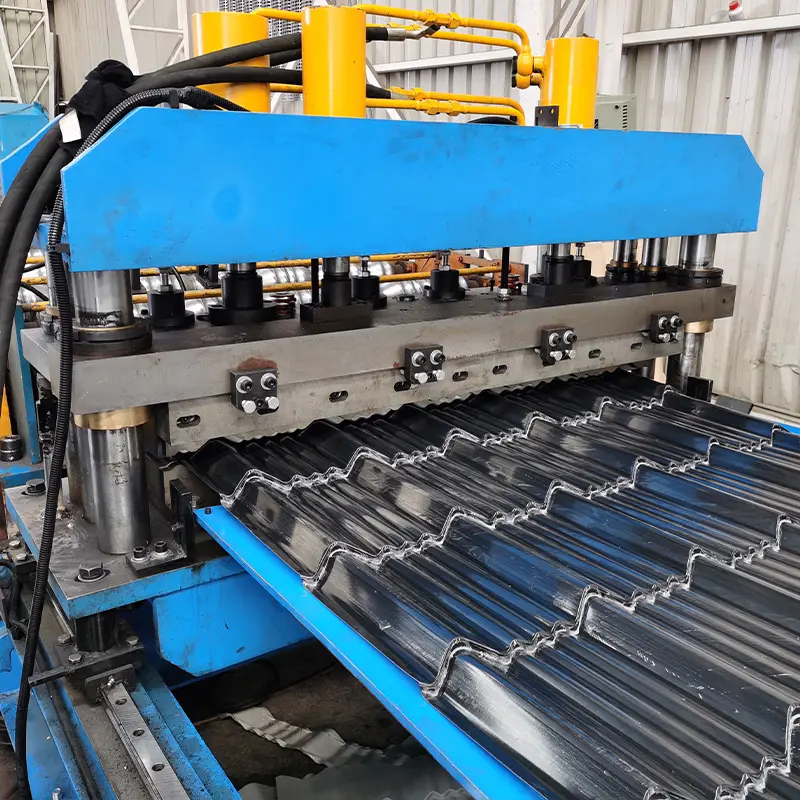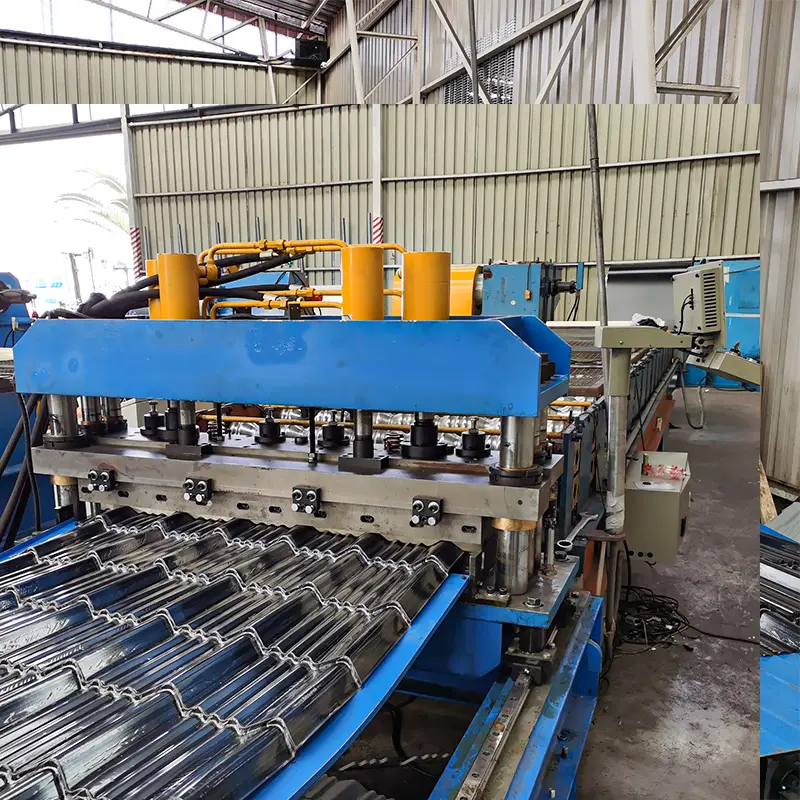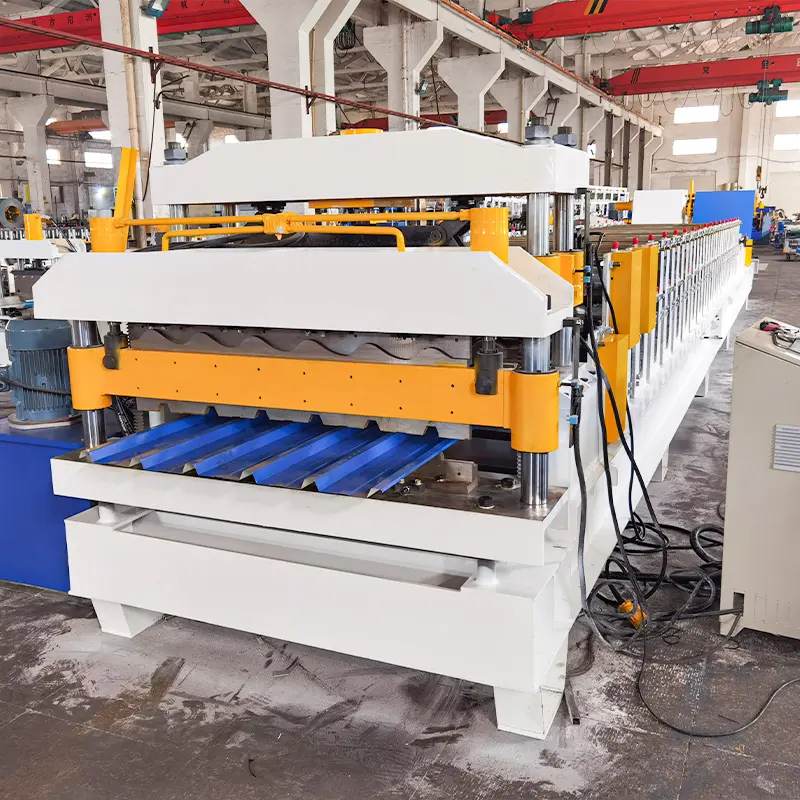परिचय
The Angle Roll Forming Machine is a versatile and efficient piece of equipment widely used in various industries for shaping and bending metal angles. This article aims to provide a comprehensive overview of angle roll forming machines, their applications, benefits, important features to consider, maintenance tips, and ways to maximize their performance.

What is an Angle Roll Forming Machine?
An angle roll forming machines, also known as an angle bending machine or angle roller, is a specialized piece of equipment designed to shape metal angles into curved or specific profile shapes. It utilizes a series of rolls to progressively bend the metal, transforming flat or straight angles into custom-formed profiles. Angle roll forming machines are commonly used in the manufacturing, construction, and automotive industries to create a wide range of angle profiles with precision and efficiency.
Applications of Angle Roll Forming Machines
Construction Industry
In the construction industry, angle roll forming machines play a crucial role in fabricating metal angles used in various structural components. These machines can produce angle profiles for applications such as roof trusses, window frames, door frames, steel beams, and supports. The ability to customize angle profiles according to project specifications makes angle roll forming machines highly sought after in the construction sector.
Automotive Industry
Angle roll forming machines find extensive use in the automotive industry for manufacturing parts and components that require curved or specially shaped angles. These machines are utilized to create angle profiles used in chassis frames, seat frames, bumpers, roll bars, and exhaust systems. The accuracy and repeatability of angle roll forming machines ensure consistent quality and fitment of the produced components.
Manufacturing Sector
Angle roll forming machines are widely employed in the manufacturing sector to produce a variety of products requiring bent or curved angles. Industries such as furniture manufacturing, appliance production, HVAC systems, and shelving systems rely on angle roll forming machines to fabricate angle profiles used in their respective products. The flexibility and adaptability of angle roll forming machines enable manufacturers to meet specific design requirements efficiently.
Benefits of Using Angle Roll Forming Machines
Cost Savings
Using an angle roll forming machine can lead to significant cost savings in the production process. By eliminating or reducing the need for manual labor-intensive bending processes, the machine increases productivity and reduces labor costs. Additionally, angle roll forming machines minimize material waste by achieving precise bends and reducing the likelihood of errors or rework.
Customization and Versatility
One of the key advantages of angle roll forming machines is their ability to produce customized angle profiles. Manufacturers can easily adjust the machine settings to create angles of various sizes, shapes, and dimensions, allowing for versatility in meeting specific project requirements. This flexibility enables the production of unique and complex angle profiles that would otherwise be challenging to achieve using traditional bending methods.
High Efficiency and Productivity
Angle roll forming machines are designed for high-speed production, enabling efficient manufacturing processes. These machines can quickly and accurately bend metal angles, resulting in higher productivity rates compared to manual bending methods. The automated nature of angle roll forming machines also reduces the risk of human error, ensuring consistent quality and reducing the need for rework or corrections.

Features to Consider When Choosing an Angle Roll Forming Machine
When selecting an angle roll forming machine for your specific needs, several important features should be taken into consideration:
Material Compatibility
Different angle roll forming machines are designed to handle specific types and thicknesses of metals. It is essential to choose a machine that is compatible with the materials you intend to work with. Consider factors such as metal gauge, tensile strength, and material type (e.g., steel, aluminum, stainless steel) when selecting a machine.
Roll Forming Capacity
The roll forming capacity of the machine determines the maximum size and thickness of angles it can produce. Evaluate the required angle dimensions and ensure that the machine can accommodate them within its roll forming capacity.
नियंत्रण प्रणाली
A reliable and user-friendly control system is crucial for operating the angle roll forming machine efficiently. Look for machines with intuitive controls, digital displays, and programmable settings to streamline the production process and facilitate quick setup and adjustments.
Safety Features
Safety should be a top priority when operating any machinery, including angle roll forming machines. Opt for machines equipped with safety features such as emergency stop buttons, safety interlocks, and guards to ensure operator well-being and prevent accidents or injuries.
Maintenance and Care of Angle Roll Forming Machines
Proper maintenance and care are essential to ensure the longevity and optimal performance of angle roll forming machines. Here are some key maintenance practices to follow:
Regular Cleaning and Lubrication
Regularly clean the machine to remove dust, debris, and metal shavings that can accumulate during operation. Lubricate moving parts as recommended by the manufacturer to prevent friction, wear, and potential breakdowns.
Inspection and Replacement of Parts
Periodically inspect the machine’s components for signs of wear, damage, or misalignment. Replace any worn-out or damaged parts promptly to maintain the machine’s performance and prevent further issues.
Training and Operator Safety
Ensure that operators receive adequate training on how to operate the angle roll forming machine safely and effectively. Emphasize the importance of following safety protocols, wearing appropriate personal protective equipment, and using the machine within its specified limits.

Tips for Maximizing the Performance of an Angle Roll Forming Machine
To maximize the performance and output quality of an angle roll forming machine, consider the following tips:
Proper Alignment and Calibration
Regularly check and adjust the alignment of the machine’s rolls to ensure accurate and consistent bending results. Calibration of the machine’s control settings should also be performed as needed to maintain precision.
Material Selection and Preparation
Choose the appropriate materials for your angle profiles, considering factors such as strength, corrosion resistance, and aesthetics. Properly prepare the materials by removing any dirt, rust, or contaminants that could affect the bending process.
Regular Maintenance Schedule
Establish a regular maintenance schedule for the angle roll forming machine. This includes routine cleaning, lubrication, and inspections, as well as periodic servicing by trained technicians to address any potential issues or preventive maintenance requirements.

निष्कर्ष
Angle roll forming machines are invaluable tools for shaping and bending metal angles in various industries. They offer numerous benefits, including cost savings, customization options, and high efficiency and productivity. By understanding the applications, benefits, important features, and maintenance tips associated with angle roll forming machines, you can make informed decisions when selecting and utilizing this equipment.
In conclusion, angle roll forming machines are versatile and efficient tools that play a vital role in shaping metal angles for diverse industries. Their ability to produce custom-formed profiles, along with cost savings, versatility, and high productivity, makes them indispensable in construction, automotive, and manufacturing sectors. When choosing an angle roll forming machine, consider factors such as material compatibility, roll forming capacity, control system, and safety features. Proper maintenance, regular cleaning, lubrication, and operator training are crucial for optimal performance and longevity. By following these guidelines and maximizing the potential of your angle roll forming machine, you can enhance productivity, ensure quality output, and meet the specific requirements of your projects.
FAQs
1. Can angle roll forming machines bend angles of different materials?
Yes, angle roll forming machines are designed to bend various materials such as steel, aluminum, and stainless steel. However, it is important to select a machine that is compatible with the specific material you intend to work with.
2. What are the advantages of using angle roll forming machines in the construction industry?
Angle roll forming machines offer customization options, cost savings through increased productivity, and the ability to produce precise angle profiles used in structural components like roof trusses, window frames, and steel beams.
3. How can I ensure the safety of operators when using an angle roll forming machine?
To ensure operator safety, choose a machine equipped with safety features like emergency stop buttons, safety interlocks, and guards. Additionally, provide thorough training to operators on safe machine operation and the importance of following safety protocols.
4. Can angle roll forming machines handle thick metal angles?
The roll forming capacity of angle roll forming machines determines the maximum size and thickness of angles they can handle. It is important to select a machine that can accommodate the dimensions and thicknesses of the angles you require.
5. What maintenance practices are essential for angle roll forming machines?
Regular cleaning, lubrication, inspection of components, and timely replacement of worn-out parts are essential maintenance practices for angle roll forming machines. Additionally, adherence to a regular maintenance schedule and operator training contribute to optimal machine performance and longevity.
